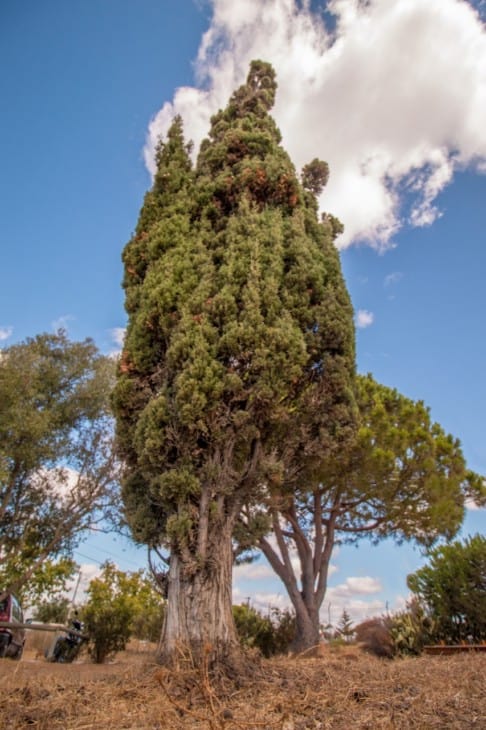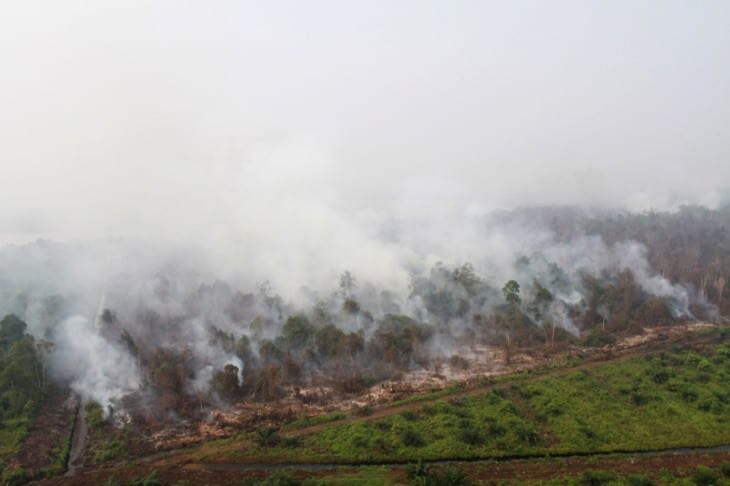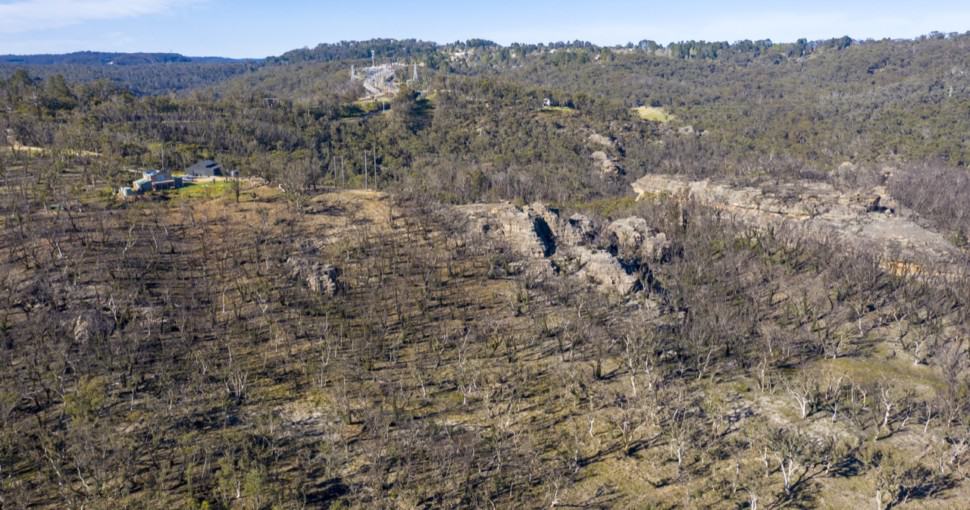Wild forest and bush fires seem to have been a regular feature in the news over the last few years. These runaway fires cause massive destruction in natural vegetation and threaten homes. Wildlife is burned, and these natural disasters can upend ecologies. The concept of fire-resistant trees and plants is not one that occurs to many people.
Contents
- Fire Resistant, Fire Retardant, Or Fireproof Trees?
- What Characteristics Make A Tree Fire Resistant?
- What Is The Purpose Of Planting Fire Resistant Trees?
- What Evergreen Trees Are Fire Resistant?
- What Is A Fire Resistant Evergreen Privacy Screening Tree?
- What Deciduous Trees Are Fire Resistant?
- Is The Coast Live Oak A Good Fire Resistant Tree?
- Conclusion
The Mediterranean cypress has been proven to be the most fire-resistant tree. Other trees which are fire-resistant are broadleaf evergreens such as the coast live oak tree, the evergreen dogwood, and citrus trees. Deciduous trees such as the Chinese elm, mulberry, and ficus are also fire-resistant.

Some trees, such as eucalyptus, accelerate fires and are tinderboxes waiting to go up in flames at the slightest spark. Being amongst these trees during a fire is truly frightening, and some even produce loud explosive volleys as they burn. Planting fire-resistant trees make a lot of sense if you live in an area where bush fires occur frequently.
Related: 5 Forgotten Cypress Tree Benefits
Fire Resistant, Fire Retardant, Or Fireproof Trees?
There must be an understanding that no tree or plant is truly fireproof or completely resistant to catching alight. An extremely hot fire will burn any plant. It is more accurate to say that some trees and plants are fire retardant. By this, we mean that the plant inhibits the fire’s progress by not being easily inflamed and slow to burn if it does catch alight.
For this report, we will use the expression fire resistant as indicating fire-retardant plants.
What Characteristics Make A Tree Fire Resistant?
There are some essential characteristics that make trees fire retardant.
- The trees have a high water content in both the bark and leaves.
- The leaves are large and thick, indicating a high moisture content or storage in the leaves.
- The trees and leaves do not produce wax, resin, or oils.
- The sap does not contain aromatic oils and has a watery consistency.
- Trees that drop limited leaf litter or have leaf litter that decomposes rapidly

What Is The Purpose Of Planting Fire Resistant Trees?
Many people think that trees must naturally be a fire risk and should be removed altogether to prevent fires from spreading. This is not necessarily the case, as some trees can help to retard the fire’s advancement.
Fire-resistant trees are usually planted in a stand or copse to form a fire break. This can help protect homes and prevent the fire from continuing in its path of destruction. If you have ever faced a raging bush fire, you will understand the desperation to curtail the ravaging flames.
The trees provide a green fire retardant barrier that lessens the heat from the fire. In addition, the trees catch any embers flying up from the advancing fire. The fact that the trees contain a lot of moisture makes them less likely to catch alight from burning embers.
What Evergreen Trees Are Fire Resistant?
A critical factor is that not all evergreen trees are fire-resistant. Conifers are evergreen, but they produce a lot of resin in their cones and bark. This makes conifers prone to catching alight and burning rapidly.
Evergreen trees should have broad leaves with minimal resin or oil production. These trees are often easily identified as they usually don’t have a distinctive smell due to the lack of resin production.
What Is the Most Fire Resistant Tree?
During the 1980s, a severe wildfire struck an area in Spain where research on tree pathogens was being conducted. When the researchers entered the region after the fire, they found that all the trees had burnt entirely except for the stand of Mediterranean cypress that they had planted. Only 1,2% of the cypresses had set alight.
This fact intrigued scientists who investigated and found that Mediterranean cypress trees can retain high water content in their leaves even when the environmental conditions are hot and dry.
Fallen cypress leaves create a moisture-retaining sponge at the base of the tree, which further inhibits the spread of the fire.
What Is A Fire Resistant Evergreen Privacy Screening Tree?
Privets are evergreen and make a good privacy screening hedge. Privets can be left to grow naturally into trees or trimmed into the desired height to create a living wall. A dense privet hedge can provide a good fire break.
What Other Evergreen Trees Are Fire Resistant?
There are several evergreen trees that are fire-resistant. It is important to evaluate which trees grow in your area. Some trees are evergreen in warm climates but deciduous in cold climates.
- Evergreen dogwood (Cornus capitata)
- Magnolia is evergreen in warm climates
- Ponderosa pine has thick bark and high water content
- Western larch retains large amounts of water and has a tough fibrous bark that does not burn easily
What Deciduous Trees Are Fire Resistant?
Although deciduous trees shed their foliage in winter, the ones which are fire resistant either have leaves that quickly decompose or form a thick moist mat on the ground.
Is The Coast Live Oak A Good Fire Resistant Tree?
The coast live oak tree (Quercus agrifolia) is a native to California and has thick green leaves with a high moisture content making it a fire-resistant tree. It is a large long-living tree, growing up 33 feet to 82 feet.
Are Maple Trees Fire Resistant?
Most maple trees are semi-evergreen to deciduous in colder climates, and they make good fire-resistant trees. They are excellent shade trees and have showy displays of autumn colors. There are some maples that are evergreen, and maples growing in warm climates may also be evergreen.
What Other Deciduous Trees Are Fire Resistant?
- Pacific dogwood (Cornus nuttalli)
- California sycamore
- Upright beech tree
- Magnolia may be deciduous depending on climate
- Greenspire Linden
- Eastern and western redbuds
- Chinese elm
- Mulberry
- Ficus
Conclusion
Fire-resistant trees can be extremely helpful in interrupting the path of uncontrollable bush or forest fires. They provide a firebreak that can protect homes and large tracts of forest and brush. If you live in a region where fires are common, consider investigating which fire-resistant trees and plants grow in your area and plant these.







